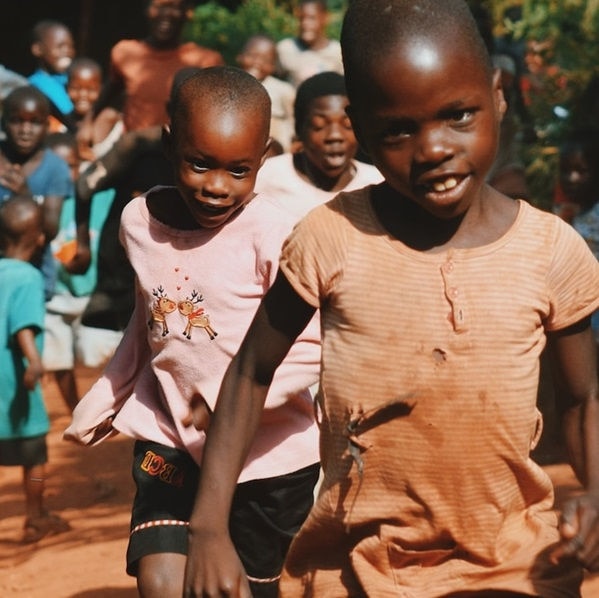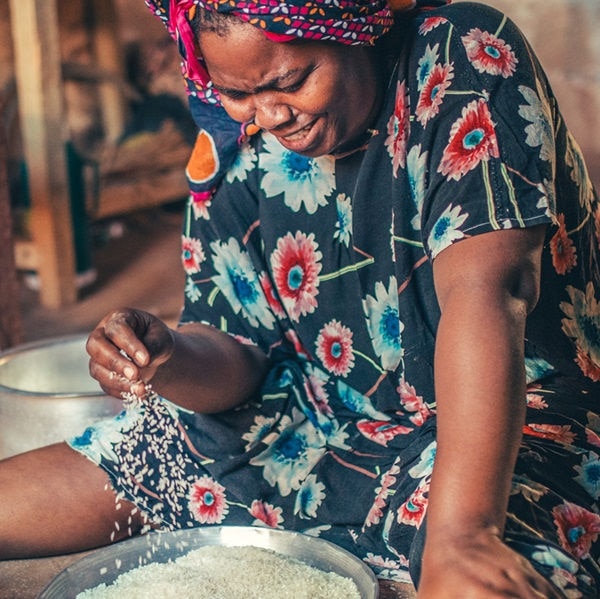News
July 11, 2023
World Population Day 2023
Addressing women’s health to support a more nourished and resilient future. Discover nutritional solutions for a brighter tomorrow this World Population Day.

Summary
- July 11th marks World Population Day 2023 – introduced by the United Nations (UN) to raise awareness of the urgency and importance of global population issues, from gender equality, poverty, maternal health and human rights to the impact of the growing population on the planet.
- This World Population Day, dsm-firmenich highlights the challenge of keeping the world’s growing population healthy – especially the health of women, who are disproportionately affected by nutritional deficiencies but critical to the wellbeing and resilience of future generations.
- Read on to uncover the scale of the issue, opportunities to champion women’s health and cutting-edge nutritional solutions powering positive change in the space.
World Population Day – celebrated on the 11th of July each year – aims to bring attention to the critical challenges and consequences associated with global population growth; and inspire solutions that will help to drive positive transformations. This year is particularly poignant, since for the first time in human history, the global population has reached eight billion people (and rising). With this in mind, we ask: how can we effectively and sustainably keep the world’s rising population healthy to ensure a brighter, more resilient future for all?
Addressing malnutrition and nutrient gaps is key to this – especially in women who are disproportionately affected by hidden hunger, i.e., the presence of multiple micronutrient deficiencies. Essential to the health of the next generation, women fulfil a role as leaders, nurturers and mothers in communities globally; and are thus key pillars in society. However, two-thirds of women of reproductive age suffer from micronutrient deficiencies.i Read on to explore the impact of this and – critically – how players across the health and nutrition industry can champion the health of women more successfully to shape healthier futures.
Protecting the health of women to give future generations the best start in life
The first 1,000 days of life – from conception to second birthday – are the most critical for development and unlocking a child’s full potential. Here, the health of the mother is crucial – the main source of an infant’s nutrition during the early years. However, due to an increased need for nutrients to support both their own and their infant’s health and development, women can be particularly vulnerable to micronutrient deficiencies during this time, which can impact the health of their child.
Even mild deficiencies in a women’s nutritional status can prevent their child from achieving important developmental milestones. However, more serious consequences include birth defects, blindness, restricted growth, cognitive impairment, decreased school productivity and sadly, even mortality.ii So, how can the nutrition industry support women’s health more effectively, and subsequently the wellbeing of future generations?
Helping moms prioritize nutrition
Our Maternal Health, Attitude and Behavior report revealed some interesting discoveries about the awareness and attitudes of women towards maternal nutrition throughout the motherhood journey – highlighting significant gaps in the knowledge of important nutrients for maternal health.iii For example, almost 40% of women at the preconception phase were not aware of folic acid, a nutrient known to reduce the risk of neural tube defects in infants. The report also concluded that supplement intake could be higher for all women across the maternal journey, with only 40% of women at the preconception stage, 60% of pregnant women and 50% of breastfeeding mothers taking daily supplements.
These data indicate a pressing need to provide greater nutritional support – including increasing awareness and education – to women throughout the entire motherhood journey. But the issue is even more challenging and complex in the low- and middle-income countries…
Nourishing women in low- and middle-income countries
Undernutrition in mothers and babies in low- and middle-income countries is the underlying cause for almost half of deaths in all children under five.iv However, the health of these women and that of their children is at great risk due to limited access to healthy, nutritious foods and therefore a higher prevalence of malnutrition in these regions.v Take anemia, a deficiency in iron, as an example. The impact of anemia during pregnancy can be severe as it increases the risk of premature birth, low birth weight and even maternal mortality.vi In addition, infants or children experiencing anemia – usually inherited from their mother – are more likely to face delayed growth, compromised learning abilities and an increased vulnerability towards infection.vii
It's here that nutritional intervention is necessary. Nutritional interventions, like staple food fortification and multiple micronutrient supplements (MMS), are critical to supporting vulnerable women and shaping healthier futures. For instance, foods like flour, bread, rice and cereals, have been fortified with folic acid to reduce the risk of neural tube defects worldwide. MMS, on the other hand, can provide 15 or more essential micronutrients and are designed to be easily incorporated into a women’s existing diet and lifestyle. Such interventions are demonstrated to support better birth outcomes and enable healthier futures for mothers and their children.
Closing the nutrient gap – the promise of education
Evidently, education is needed to raise awareness of the power of nutrition in women and the role that nutritional interventions can play in closing nutrient gaps where needed. However, this doesn’t stop at nutrition. Education linked to breastfeeding, child nutrition, diarrhea treatment and prevention and the benefits of immunization also need to be clearly communicated to women and mothers to protect the health of future populations.
Nevertheless, we cannot do this alone. Collaboration is key to ensuring education programs are implemented to empower women, their families and wider societies; and ultimately reaching vulnerable communities worldwide to improve the accessibility of nutritious foods and solutions.
dsm-firmenich: committed to the health of women globally
dsm-firmenich understands that addressing health inequalities and hidden hunger in women can help communities thrive. We are passionate about supporting the health of the global population – including the wellbeing of women – to create a brighter tomorrow via our portfolio of high-quality products, customized solutions and expert services, which are specially designed to close nutritional gaps. Our mission to “Improve nutrition, Improve lives’ is powered by our partnership with the World Food Programme. Through this collaboration we reach more than 35 million people annually (and counting) with our nutritious products and continue to drive the transformation of food systems globally.
Explore more
Want to learn more about how we’re delivering on the promising of a better-nourished world?
References
1. WHO and FAO Second International Conference on Nutrition (ICN2). FAO. 2014. Retrieved 04/07/2023 from Report of the Joint FAO/WHO Secretariat on the Conference.
2. Nutrition of Women and Adolescent Girls: Why It Matters. PRB. 2003. Retrieved 03/07/2023 from Nutrition of Women and Adolescent Girls: Why It Matters | PRB.
3. Maternal Health, Attitude and Behaviour Report. DSM. 2023. Retrieved 06/07/2023 from Maternal nutrition insights to power your next innovation (dsm.com).
4. WHO. Malnutrition [factsheet], accessed 10 July 2023.
5. Sudfeld CR, Smith ER. New Evidence Should Inform WHO Guidelines on Multiple Micronutrient Supplementation in Pregnancy. J Nutr. 2019 Mar 1;149(3).
6. Noran & Mohammed. The impact of maternal iron deficiency and iron deficiency anemia on child’s health. Saudi Med J., 36(2): 146-149, 2015.
7. Copenhagen Consensus III. Copenhagen Consensus. 2012. Retrieved 04/07/2023 from Copenhagen Consensus III.
Related Content
Quick links
Customized blends of functional ingredients in one single, efficient premix.
Streamline your product development process and get to market faster.
From trade shows to conferences and other industry events, find out where you can meet us next.
Talking Nutrition, Health & Care
Explore new science, consumer insights, industry news and more in our latest articles.
Discover educational whitepapers, webinars, publications and technical information.
Request samples, place orders and view product documentation.


